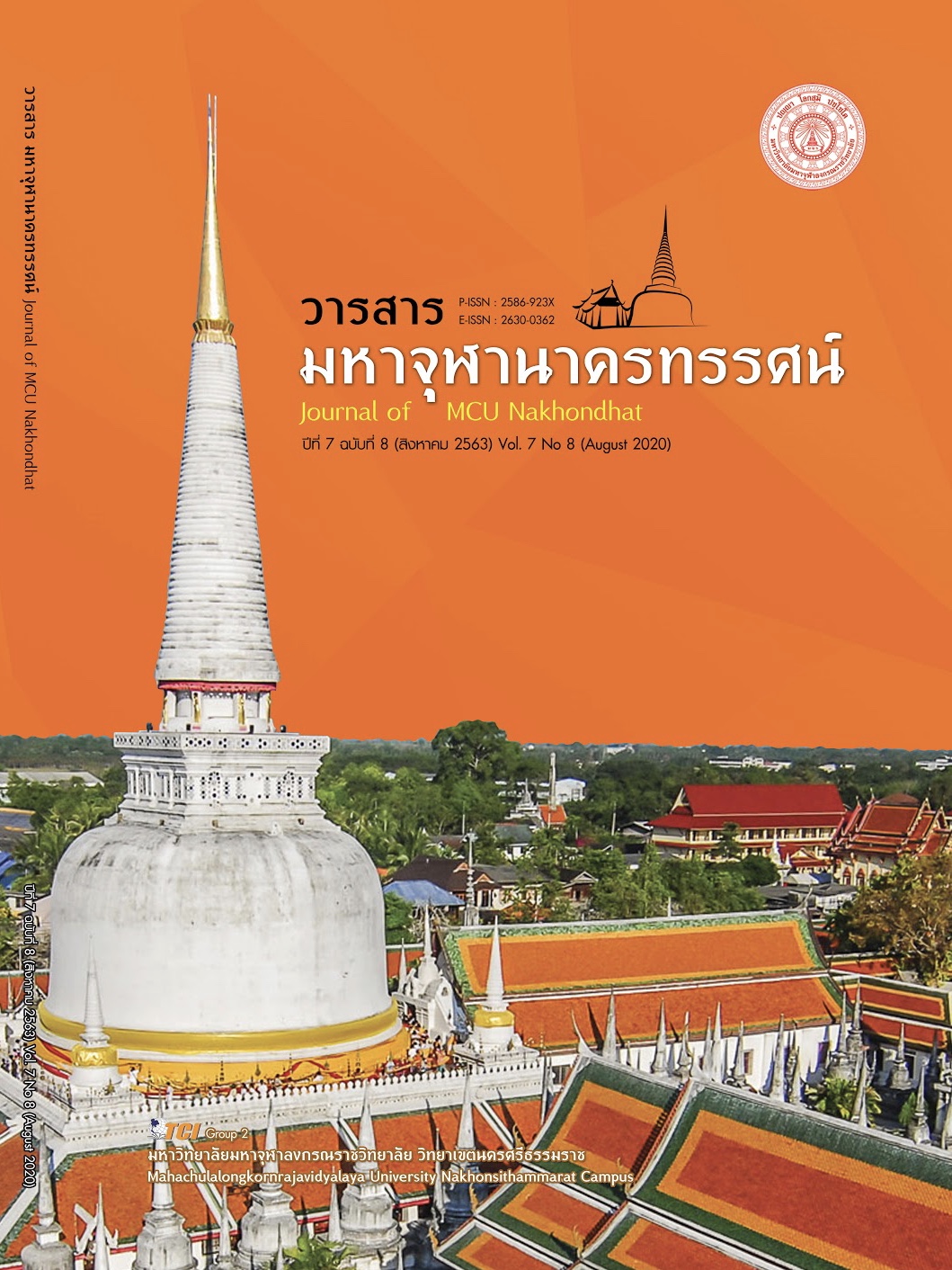BUDDHIST PSYCHOLOGY FOR MARGINALIZED PEOPLE
Main Article Content
Abstract
This article is an academic article aimed at presenting important content of Buddhist psychology for marginalized people to develop their physical, mental, intellectual, and social development under the 5 principles, namely Dhamma Dhammikattharapol, Physical Education Principles. 5 principles of the Sappurisadhamma, the 7 principles of Pariyasitti, 4 and the Makha have 8 elements to improve the lives of marginalized groups. In living under the mainstream society In which these groups have problems in their lives Physical, mental, intellectual, and social problems therefore have to apply Buddhist psychology to improve the quality of life because the study analyzes the mind that is related to suffering (problem) which is the true state of life. Understand the causes of suffering (problems) Understand the real purpose of life is Niroth (cessation of suffering, end problems). Know how to practice to face problems without being forced from suffering (problems) without discouragement, hopelessness to fight and face. Suffering (problems) firmly in accordance with the Buddhist principles The introduction of Buddhist psychology to remedy the mind for marginalized people is a mental therapy. Due to that marginalization Causing people or groups that are not interested in society Were abandoned, separated from the mainstream society, such as hill tribes, minorities, prostitutes Same – sex groups or people with disabilities. In addition, marginalized people include those who are rejected by most societies, such as in the classroom. But classmates are almost all good at studying. Therefore it is essential that these principles be developed to bring happiness and perfection into life
Article Details
References
พระเทพวิสุทธิกวี (พิจิตร ฐิตวณฺโณ). (2543). พิมพ์ลักษณ์. กรุงเทพมหานคร: มหามกุฏราชวิทยาลัย.
พระธรรมปิฎก (ป.อ. ปยุตฺโต). (2528). พจนานุกรมพุทธศาสตร์ ฉบับประมวลศัพท์. กรุงเทพมหานคร: มหาจุฬาลงกรณราชวิทยาลัย.
พระพรหมคุณาภรณ์ (ป.อ.ปยุตฺโต). (2548). พจนานุกรมพุทธศาสตร์ ฉบับประมวลธรรม. เรียกใช้เมื่อ 8 กรกฎาคม 2562 จาก http: //www.84000.org/tipitaka/dic/ d_item.php?i=287.
พันธุ์ทิพย์ กาญจนะจิตรา สายสุนทร. (2555). คนชายขอบ (Marginal People) ในความหมายของ ICCPR Country Report. เรียกใช้เมื่อ 8 กรกฎาคม 2562 จาก https: //www.gotoknow.org/posts/204923
มหาจุฬาลงกรณมหาวิทยาลัย. (2539). พระไตรปิฎกภาษาไทย ฉบับมหาจุฬาลงกรณราชวิทยาลัย. กรุงเทพมหานคร: โรงพิมพ์มหาจุฬาลงกรณราชวิทยาลัย.
วิชุดา สร้อยสุด. (2556). บทความเชิงวิชาการ เรื่อง คนชายขอบ. เรียกใช้เมื่อ 12 กรกฎาคม 2562 จาก http: //sd–group1.blogspot.com/2013/01/53242551.html.
สุริชัย หวันแก้ว. (2546). กระบวนการกลายเป็นคนชายขอบ. กรุงเทพมหานคร: คณะกรรมการสภาวิจัยแห่งชาติ สาขาสังคมวิทยา สำนักงานคณะกรรมการวิจัยแห่งชาติ.
jane. (2556). สิทธิของคนชายขอบ. เรียกใช้เมื่อ 12 กรกฎาคม 2562 จาก http: //angkanajany.blogspot.com/2013/09/blog–post_23.html


